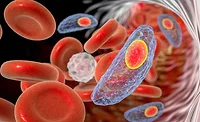Food Safety Databases: A New Challenge

The widespread move from global food supply chains to food supply networks presents considerable challenges that call for a re-evaluation of our approaches to food safety. Currently, the advances in globalization of the food supply network have outstripped our regional safety processes and procedures, as exemplified by the absence of a global food safety authority. Many recent events in food safety have demonstrated the need to remain vigilant and maintain appropriate state-of-the-art testing facilities. New approaches are being developed to provide timely notification based on a wide range of methods, from early warning systems, prediction and forecasting methods to psychological investigations to combat fraudulent practices. The major current emphases could be summarized as the necessity to move to pre-emptive intelligence gathering to attain more coherent regulation of a widening network supply against diminishing regulatory resources.
Optimizing the Value of Data
The recent revolution in data mining as a part of the science of informatics has led to considerable returns in a variety of fields, ranging from medicine (genetics to pharmaceuticals) to epidemiology (infection to nutrition). The ability to interrogate vast and live databases presents a number of challenges, including the selection of data for scrutiny. A major food safety database may contain a dozen or more variables with various characteristic information particulars for each notification, with thousands of notifications logged per year. For example, the European Commission’s Rapid Alert System for Food and Feed (RASFF) usually lists most of the following: country reporting and reported, contaminant type and levels, type and classification of notification, food or feed type. The user-friendly RASFF portal (webgate.ec.europa.eu/rasff-window/portal/) is provided as a search engine with a convenient menu-based search facility. For specific queries (such as when was melamine last notified), this is a very useful, query-led system.
For more complex or in-depth interrogations of a database, such as for trend analyses, there is usually a necessity to invoke statistical analysis and cross-tabulation with results presented as descriptive statistics and plotted as bar, pie or line charts. This approach has a number of limitations. An immediate issue arises regarding the objectivity of any search performed in this manner where segments are taken from a large database. Who is selecting the data sets to be scrutinized and using what criteria? It is time consuming, and with some 12 variables to each entry, the ability of pie and bar charts to cope is very limited, especially given the breadth of the food supply network.
For these reasons, new approaches to interrogating complex databases are being developed. One such approach involves network analyses that have been very successful in mapping the spread of infections, the pathways of criminal and terrorist activities and complex biological processes, such as protein interactions. Network analysis is very useful where a number of players interact through complex networks that can be captured using algorithms like those used by everyday Internet search engines to rapidly find popular websites.
Network Analysis: The Future Search Tool
Network analytical tools (NATs) are based on a meaningful relationship between two “nodes” (e.g., countries or suppliers) with edges (or connections) having weights (e.g., number of food safety reports or supply transactions). In our approach, we set producer nations of faulty foods as Transgressors and policing nations as Detectors. By extracting database content, network analysis has the key advantages of capturing complexity and analyzing trends, along with ease of use and speed. Thus, we built the first NAT to facilitate data mining to investigate country interactions (Transgressors and Detectors) by time, source identified and chemical groups to provide complex trend data along with subtle underlying information.
An example of the output is provided in Figure 1. The key features are the ability to select type of notification (on top left) and the network map showing Detector nations in green and Transgressor nations in red. Finally, the timeline shows trends in detection (green) and transgressions (red) for the selected nation. Thus, in Figure 1, Germany has been selected as the nation of interest for “every alert” and the timeline shows it is predominantly a Detector nation over the period. The food safety NAT is designed for simplicity and for use by those with different language abilities. The nation of interest can be selected by clicking on its label in the network map or via the drop-down menu above the trend line. 
An example of the flexibility of the NAT is given in Figure 2, where Brazil is identified as salmon pink in 2005 in “every alert” mode. This denotes moderate Transgressor activity when all notifications are considered. On the list below the timeline, the Transgressor index is 42.4. A rapid switch to “bacteria” mode reveals a move to bright red, showing that Brazil has a spike in transgressions for this category at the time selected. The Transgressor index now reads 408.4, revealing that it is a major contributor at this time point for transgressions caused by bacteria.

In a similar fashion, the database can be interrogated for any country at any time point for any of the selected categories (every alert, metals, microorganisms, mycotoxins and border rejections). Once a selection is made, the NAT responds by rearranging to deliver the NAT plot, trend line and index data.
NAT’s advantages are that it affords a user-friendly appraisal of a database, being capable of handling a high level of complexity and providing outputs in minutes. The NAT readily demonstrates which countries are Transgressors and Detectors at a time point of interest and category of alert. It can also demonstrate the impact of each nation, using algorithms such as those used by Internet search engines. Many more applications of the NAT are provided in our published research, many of which are open access.[1–7]
The current NAT is in prototype form on open access, along with a short set of instructions (staffnet.kingston.ac.uk/~ku36087/foodalert/). The Java freeware is required to run the NAT. Following a recent stakeholder engagement to design a final flexible NAT, work is underway to develop the live-feed tool.
Future Perspectives
The prototype NAT has been developed specifically to maintain broad functionality to facilitate the incorporation of varied databases into the final, live-feed NAT. From the outset, extension beyond government to company databases has always been a goal. Another end goal is to provide the NAT in a format that allows coupling of food safety databases with real-time inputs (e.g., on a daily or weekly basis) to rapidly detect and track food safety issues across the globe, using business and government databases.
Another planned facility will involve a process control approach with a flag system in place to signal where a new trend is developing. For example, green flags that indicate normal levels of activity would move to red if significant additional nations are involved or combinations of contaminants occur or levels of contaminant exceed set concentrations. This level of activity would ideally incorporate government and company laboratory or food safety information management system feeds (Figure 3).

Following the development of the prototype network tool, the stakeholder engagement has been conducted to identify and incorporate the optimal set of design features. The current stage is focused on blueprint and software development for the final NAT. In line with the stakeholder engagement phase, key suggestions will be incorporated where possible. If you have any suggestions for the NAT, please e-mail them to the authors at the addresses below.


References
1. Nepusz, T., A. Petróczi and D.P. Naughton. 2009. Network analytical tool for monitoring global food safety highlights China. PLoS One 4:e6680.
2. Nepusz, T., A. Petróczi and D.P. Naughton. 2009. Food recall patterns for metal contamination analyses in seafoods: longitudinal and geographical perspectives. Environ Int 35:1030–1033.
3. Naughton, D.P. and A. Petróczi. 2009. Mercury, cadmium and lead contamination in seafood: a comparative study to evaluate the usefulness of target hazard quotients. Food Chem Toxicol 47:298–302.
4. Nepusz, T., A. Petróczi and D.P. Naughton. 2008. Worldwide food recall patterns over an eleven month period: a country perspective. BMC Public Health 8:308.
5. Petróczi, A., G. Taylor, T. Nepusz and D.P. Naughton. 2010. Gate keepers of EU food safety: Four states lead on notification patterns and effectiveness. Food Chem Toxicol 48:1957–1964.
6. Nepusz, T., A. Petróczi and D.P. Naughton. 2012. Interactive network analytical tool for instantaneous bespoke interrogation of food safety notifications. PLoS One 7:e35652.
7. Taylor, G., A. Petróczi, T. Nepusz and D.P. Naughton. 2013. The Procrustean bed of EU food safety notifications via the Rapid Alert System for Food and Feed: Does one size fit all? Food Chem Toxicol 56:411–418.
Looking for quick answers on food safety topics?
Try Ask FSM, our new smart AI search tool.
Ask FSM →








